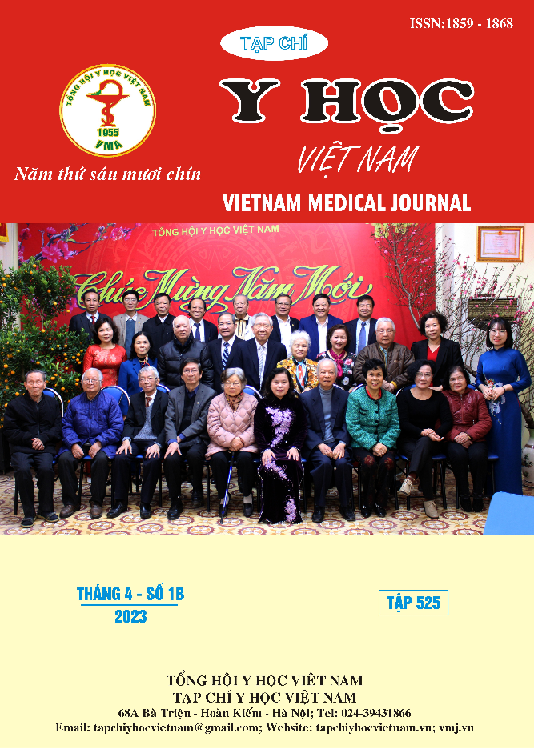RESEARCH INTO THE CLINICAL, PARACLINICAL CHARACTERISTICS OF DENGUE HEMORRHAGIC FEVER WITH HEPATIC DAMAGE IN CHILDREN AT QUANG NGAI OBSTETRICS AND PEDIATRICS HOSPITAL
Main Article Content
Abstract
Introduction: Hepatic damage is a common manifestation of Dengue hemorrhagic fever (DHF). Elevated liver enzymes is one of the predictors of severe Dengue. Objective: Describe the clinical, paraclinical characteristics of Dengue hemorrhagic fever with hepatic damage in children and explore the factors associated with severe Dengue. Subject and Method: Cross-sectional description of children from 1 month to under 16 years old are diagnosed DHF had hepatic damage (AST/ALT ≥120 U/L) and treated at Quang Ngai Obstetrics and Pediatrics Hospital from 31/10//2021 to 31/10/2022. Result: There were 177 DHF children had hepatic damage. Most hepatic damage in the study was mild, accounting for 93.2% (165/177). The Dengue with warning signs accounted for the highest rate with 45.8% (81/177), followed by Dengue without warning signs (32.8%) (58/177) and severe Dengue (21.4%) (38/177). There were 14.2% (25/177) children with severe plasma leakage; 4 cases of severe organ impairment, of which 3 cases of hepatic failure and 1 case of encephalitis. Factors related to severe Dengue are: petechiae; lethargy or restlessness; nausea, vomiting; abdominal pain (liver region); hepatomegaly; platelet count <50x109/L; rapid decrease in platelet count; increase in haematocrit (Hct); hyponatremia; Prothrombin time disorder; activated partial thromboplastin time (aPTT) disorder; classification of hepatic damage and plasma leakage determined on ultrasound. Conclusion: The rate of Dengue with warning signs and severe Dengue in DHF had hepatic damage is high. It is necessary to screen liver enzymes to detect early cases of hepatic damage and help timely management.
Article Details
Keywords
Dengue hemorrhagic fever, hepatic damage.
References
2. Nguyễn Hữu Châu Đức, Nguyễn Thị Minh Thư (2022), Nghiên cứu một số yếu tố tiên lượng nặng ở bệnh nhi sốt xuất huyết Dengue, Tạp chí Y học lâm sàng, 76, tr.100-106
3. Nguyễn Mậu Thạch (2022), Nghiên cứu đặc điểm lâm sàng, cận lâm sàng của bệnh sốt xuất huyết Dengue ở trẻ em tại Bệnh viện Sản-Nhi Quảng Ngãi, Luận văn chuyên khoa cấp II, Đại học Y Dược Huế.
4. Nguyễn Thị Anh Vy (2020), Nghiên cứu đặc điểm lâm sàng, cận lâm sàng và kết quả điều trị bệnh sốt xuất huyết ở trẻ em tại Bệnh viện Đa khoa tỉnh Bình Định, Luận văn chuyên khoa cấp II, Đại học Y Dược Huế.
5. Adane T., Getawa S. (2021), Coagulation Abnormalities in Dengue fever infection: A systematic review and meta-analysis, PloS. Negl. Trop. Dis., 15(8), p. e0009666.
6. T. Nguyen M., Ho T. N., Nguyen V. V., et al. (2017), An Evidence-Based Algorithm for Early Prognosis of Severe Dengue in the Outpatient Setting, Clinical Infectious Diseases, 64(5), pp. 656-663.
7. WHO (2012), Handbook World Health Organization And Special Programme For Research And Training In Tropical Diseases.
8. Yolanda N., Harris Alfan (2017), Initial clinical and laboratory profiles to predict pediatric Dengue infection severity, Paediatr. Indones., 57(6), pp. 303-309.


